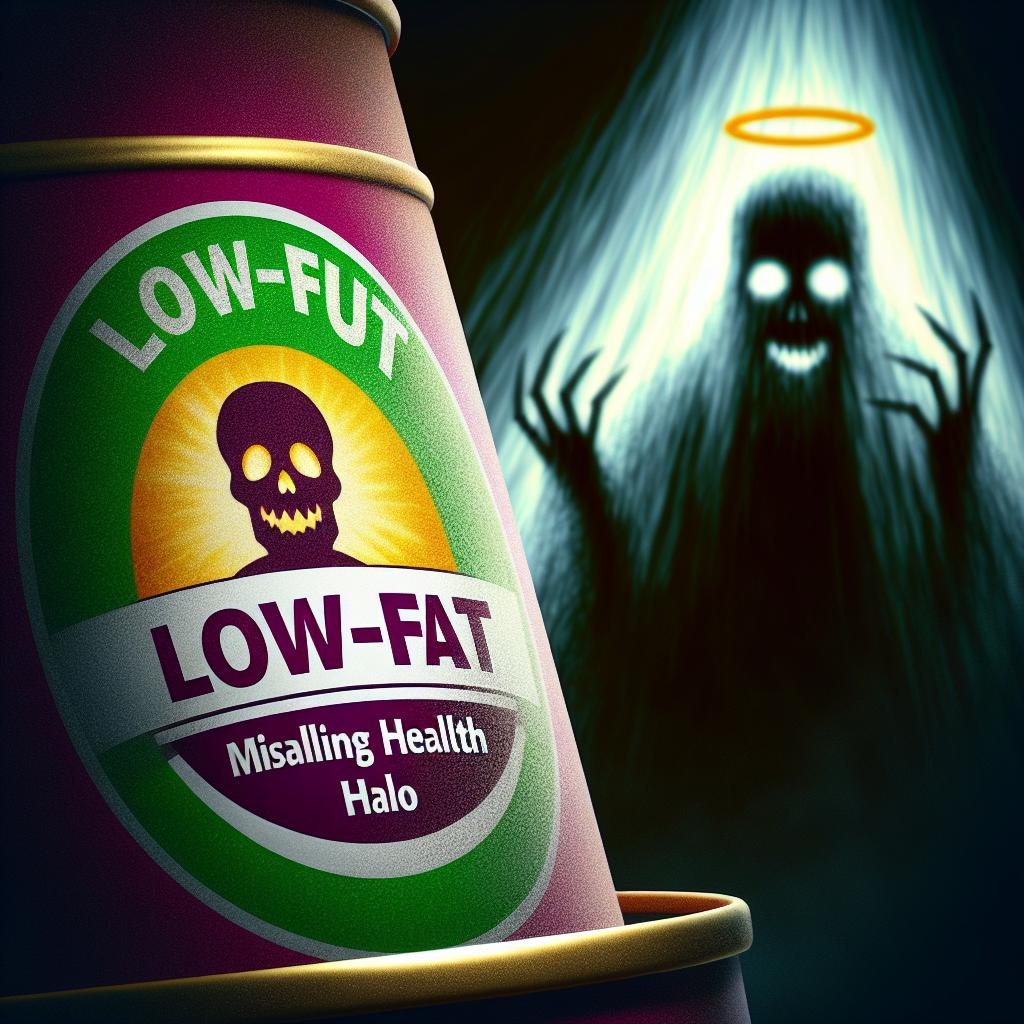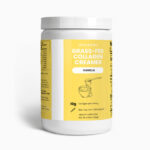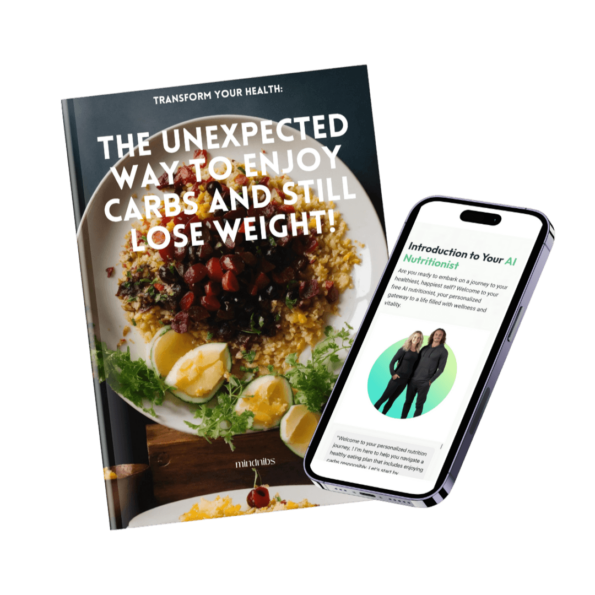
“7 ‘Health Foods’ That Might Not Be So Healthy”
Imagine strolling through the aisles of your local supermarket, your shopping cart teetering with an array of vibrant packages all screaming the same seductive promises: “health,” “natural,” and “nutritious.” You’re on a quest, after all, to reboot your eating habits and fuel your body with only the best of what’s on offer. Yet, what if the very foods you’re stocking up on—those that proudly wear the badge of ‘health foods’—are undercover agents of the not-so-wholesome variety?
In the cunning world of food marketing, every product is a superhero until unmasked. Welcome to the enlightening journey of declassification where we’ll unveil the startling truth behind 7 ‘Health Foods’ That Might Not Be So Healthy. Prepare to be your own food detective as we dissect popular health food claims, unravel nutritional myths, and retrain your tastebuds for genuine health. After all, knowledge is your superpower when it comes to making informed choices about what you eat. So, brace yourself—we’re about to go beyond the shiny labels and into the nitty-gritty of what truly constitutes a health food.
Table of Contents
- Unmasking the False Prophets of the Pantry
- The Hidden Sugars in Your “Healthy” Snack Bars
- Why Your Diet Soda May Not Be a Friend to Your Waistline
- The Great Granola Deception: It’s Not Always a Wholesome Choice
- Salad Dressings That Drown More Than Just Your Greens
- “Low-Fat” Labels: The Misleading Health Halo You Should Ignore
- The Organic Trap: How Clean Labels Conceal Calories
- Smoothie Blunders: Fruit Bombs Masquerading as Health Elixirs
- Multigrain Myths: Don’t Be Fooled By the Healthy-Sounding Name
- Navigating the Yogurt Aisle: Sugar Pots in Disguise
- Q&A
- In Summary
Unmasking the False Prophets of the Pantry

Stepping into the health food aisle feels like a walk through a nutritional utopia, where every item promises a remedy for your dieting woes. Yet, lurking among the rows of glossy packaging and buzzwords are items masquerading as ‘healthy’ when in reality, their benefits may be more fiction than fact. Understanding these nutritional faux pas can be the difference between a truly healthy meal and a deceptive diet disaster.
First on our watchlist is the silent sugary-ambusher, often found in flavored yogurt. Labeling pitches it as a calcium-rich snack loaded with probiotics but glance at the nutrition label, and the sugar content might surprise you. A better bet? Opt for plain Greek yogurt and add a dollop of real fruit.
Under the same sugarcoated umbrella are the cereal bars that claim to be packed with fiber and whole grains. The reality is that many are crammed with high fructose corn syrup and provide little nutritional value compared to their unprocessed counterparts. Swap them for a handful of unsalted nuts or a piece of whole fruit to keep the mid-morning munchies at bay.
| Health Food | Common Pitfall | Healthy Alternative |
|---|---|---|
| Bottled Smoothies | Excess Sugar | Homemade smoothie with fresh greens |
| Pre-Made Salads | High-Calorie Dressings | Mixed greens with a dash of olive oil and vinegar |
| Veggie Chips | Added Salt and Oils | Sliced veggies with hummus dip |
Treading further down the aisle, beware the svelte branding of ‘light’ salad dressings. Often, the calorie conservation comes at the expense of a nutritional trade-off—spiking sugar and sodium levels to compensate for lost flavor. Your greens deserve better. Try a homemade dressing with extra virgin olive oil, vinegar, and seasonings that harmonize without hiding.
The Hidden Sugars in Your “Healthy” Snack Bars

When you reach for that seemingly nutritious snack bar, you’re likely seeking a quick, convenient boost of energy that aligns with your health-conscious goals. But hold up—before you unwrap that amalgam of fruits, nuts, and grains, let’s take a closer peek at what lurks beneath the surface. Often, these snack bars are masterpieces of marketing, cloaked in the guise of wellness but stuffed with added sugars that can sabotage your snacking savvy.
Cleverly Concealed Sugars: First things first, scan the ingredient list. What’s masquerading as ‘organic cane syrup’ or ‘brown rice concentrate’ is sugar in disguise. These sweet aliases can accumulate quickly, turning your healthy treat into a dessert. To make matters more perplexing, many bars tout the absence of high-fructose corn syrup, yet they’re packed with ‘natural’ sweeteners that impact your body in remarkably similar ways.
Even options branded as ‘low-sugar’ can be misleading. They might substitute traditional sweeteners with sugar alcohols like sorbitol or xylitol. Although these have a lesser effect on blood sugar levels, they can still hold a calorie count that negates the ‘low-sugar’ benefit. For those particularly sensitive, sugar alcohols may even cause digestive discomfort.
The solution? Seek out bars with minimal added sugars and straightforward, recognizable ingredients. Check the labels for high sugar content that could be hiding behind health halos. Here’s a simple breakdown to illustrate the point:
| Ingredient | Sugar Content |
|---|---|
| Organic Cane Syrup | High |
| Brown Rice Syrup | High |
| Honey | Moderate to High |
| Agave Nectar | High |
Remember, the best snack is one that fuels your body without hidden costs. By being a discerning consumer and understanding labels, you can ensure your healthy snack bars don’t just taste good, but are good for you, too. Opt for whole food snacks or bars with low sugar content and high protein or fiber to genuinely benefit your body.
Why Your Diet Soda May Not Be a Friend to Your Waistline

If you’ve ever reached for a diet soda in hopes of fending off calories, you’re not alone. It’s the zero-calorie promise that makes us believe we’re making a waist-friendly choice. But, beneath the fizz and the sugar-free label lurks a complexity of factors that could be expanding your midsection.
Tricking Your Metabolism may sound like a magician’s act, but it’s what diet sodas do best. Artificial sweeteners can confuse our bodies, causing our metabolism to slow down. Here’s why: When you take a sip, your body braces for sugar, but without the subsequent calories to burn, your body’s metabolic response can become sluggish. Instead of aiding weight loss, this can contribute to weight gain or plateau.
- Hunger Pangs: The sweetness might trick your taste buds, but it can also trigger hunger. Artificial sweeteners are much sweeter than sugar, potentially recalibrating your sweetness threshold and making healthy foods less satisfying, leading you to crave more sweet or carbohydrate-rich foods.
- Unhealthy Gut: Emerging research suggests that certain artificial sweeteners can alter the microbiome in your gut, which is crucial for digestion and overall health. Dysbiosis, or an imbalance of gut bacteria, can wreak havoc on your weight management efforts.
In light of these factors, we’ve compiled a table to showcase the stark contrast between popular beliefs and the underlying reality that diet beverages might be contributing to.
| Belief | Reality |
|---|---|
| Lower Calorie Intake | Metabolic Slowdown |
| No Sugar Crash | Increased Sugar Cravings |
| Helps Lose Weight | Could Lead to Weight Gain |
| Good for Diets | Potential Gut Health Issues |
When we peel back the label, it’s clear that diet sodas might need a re-assessment in our dietary playbook. Opting for water, infused with natural flavors like cucumber or lemon, might be the lesser of two evils. Hydration is key and without the hidden potential risks, you’re doing your waistline—and your health—the favor it deserves.
The Great Granola Deception: It’s Not Always a Wholesome Choice

Granola has cloaked itself in a veil of health, but oftentimes, it’s a wolf in sheep’s clothing. Marketed as the go-to snack for health enthusiasts, it promises a bounty of nutrients packed in those crunchy clusters. Yet, the shocker lies within the ingredient list—a realm where sugar and fat often take center stage, masquerading as your morning dose of “good for you.”
Before you let granola’s rustic, earthy packaging seduce you, take a moment to dissect its contents. What’s often touted as an all-natural energy booster is sometimes nothing more than a glorified dessert. Unwanted calories can sneak into your diet via sneaky additives like chocolate chips, sugary dried fruits, and honey-coated oats. To make matters worse, the portion sizes can be misleading – what looks like a modest scoop can, in reality, contain more calories than a candy bar.
| Typical Ingredient | Healthier Alternative |
|---|---|
| Chocolate Chips | Raw Cacao Nibs |
| Honey-Coated Oats | Plain Rolled Oats |
| Sugary Dried Fruit | Fresh Fruit or Unsweetened Dried Fruit |
Now, does this mean you need to banish granola from your pantry forever? Not necessarily. The key lies in making informed choices. Opt for varieties with simple, wholesome ingredients and minimal added sugars. Better yet, you might want to try your hand at making a homemade batch. This way, you control what goes into your mix, ensuring that every bite is as nourishing as it is delightful.
- Look for low sugar content on nutrition labels.
- Choose granola with a high fiber and protein count to keep you full longer.
- Be wary of portion sizes – measure it out!
- Go for the unsweetened variety and add your own fruit for flavor.
Remember, it’s not about demonizing granola but about peeling back the veil of marketing to reveal the truth. And sometimes, that truth is that health food isn’t always what it seems. Empower yourself with knowledge, and let your pantry reflect the genuine health that you aspire to achieve.
Salad Dressings That Drown More Than Just Your Greens

Imagine draping your crisp, colorful salad with a concoction that’s supposed to be the epitome of health. But what if that drizzle of creamy goodness is actually a health food imposter? Believe it or not, some store-bought salad dressings are secret saboteurs in disguise, laced with hidden sugars, excessive sodium, and unhealthy fats that can tip the scales in the wrong direction.
Diving into the ingredients list of these bottled blends can be a real eye-opener. The “light” and “low-fat” labels might tug at your health-conscious heartstrings, but don’t be misled. Often, when fat content is reduced, sugar or high fructose corn syrup is drafted in to preserve taste, turning your leafy feast into a silent foe on the nutritional battlefield.
- Soybean and canola oil: While they might not sound menacing, these oils are frequently highly processed and may contribute to inflammation.
- Xanthan gum and modified food starch: Additives that lend your dressing viscosity but offer little in terms of health value.
- Artificial preservatives and colors: These chemical stowaways do nothing to enhance the nutritional profile of your meal.
| Dressing Type | Calories | Sugars | Fats |
|---|---|---|---|
| Creamy Caesar | 80 | 1g | 8g |
| Ranch | 73 | 0.8g | 7.7g |
| French | 65 | 5g | 5g |
Turning a blind eye can no longer be an option. To reclaim your salad’s spotlight as the health star, opt for homemade vinaigrettes made with olive oil, vinegar, and a splash of citrus or herbs. Or, if you’re on the go, why not choose a simple olive oil and balsamic mix? Your body will thank you for dodging those undercover offenders and choosing a more wholesome path to flavor town.
“Low-Fat” Labels: The Misleading Health Halo You Should Ignore

Have you ever been lured into thinking that something labeled “low-fat” must automatically be better for your health? It’s a common misconception that’s been circling the aisles of grocery stores for years, dazzling consumers with promises of guilt-free indulgence. Yet, what’s not highlighted on these alluring packages could be more telling than what is.
Understanding the “Health Halo”
- The term “health halo” refers to the glow of healthfulness a product projects, often distracting from its less nutritious aspects. Products plastered with “low-fat” often compensate for lost flavor with added sugars, salts, or thickeners — ingredients that are not exactly synonymous with health.
- Moreover, these products can lead to overeating, as the low-fat label seduces us into a false sense of dietary freedom, encouraging us to consume more than we normally would.
The Nutritional Breakdown
Let’s not be fooled by the shine of the “health halo.” It’s crucial to check the nutrition label for the real story. Here’s what you might find lurking behind a “low-fat” tag:
| Typical “Low-Fat” Product | Added Sugars | Artificial Additives | Total Calories |
|---|---|---|---|
| Yogurt | High fructose corn syrup, flavored syrups | Artificial flavors, stabilizers | May be similar to or higher than full-fat versions |
| Salad Dressing | Honey, agave, or other sweeteners | Emulsifiers, flavor enhancers | Calories saved are often negligible |
Choosing Wisely
Remember, the devil is in the details. To navigate this tricky terrain, focus on the integrity of the whole food rather than the marketable phrases like “low-fat.” Opt for natural, minimally processed options where the full nutritional content, including healthy fats, is preserved. Whole foods not only provide better nutritional value but also keep you satisfied longer, helping to curb the unnecessary snacking that “low-fat” products so often incite.
The Organic Trap: How Clean Labels Conceal Calories

When meandering through the grocery aisles, many of us are lured by the promise of ‘clean’ labels – pristine packaging that boasts of ‘organic’, ‘all-natural’, or even ‘superfood’ benefits. Yet, these virtuous claims might be quietly disguising an inconvenient truth: a high-calorie count that doesn’t tally with your health goals. Despite their wholesome aura, these seemingly benign items can become inadvertent saboteurs on your journey to wellness.
Beware the smoothie syndrome – those store-bought bottles of verdant greens and ripe fruits may seem like liquid gold for your body. But pause before sipping; they can be stealth reservoirs of sugars and calories. Their labels might omit the fact that they often contain concentrated fruit juices and flavor enhancers that pad the calorie count dangerously close to that of a sugary soft drink.
Let’s not forget the granola trap, either. Draped in the aura of hearty, fibrous goodness, many granolas are, in truth, sugary clusters held together with syrups and oils. These additions can exponentially increase the calorie density, leaving you with a bowlful of disguised dessert.
- Nut butters with added oils and sugars
- Pre-packaged ‘health’ bars loaded with sweeteners
- Flavored yogurt that often rivals ice cream in sugar content
| Food Item | Calories without ‘extras’ | Calories with ‘extras’ |
|---|---|---|
| Organic Juice Smoothie | 100 | 250 |
| All-Natural Granola | 120 | 210 |
| Gourmet Nut Butter | 90 | 160 |
This table portrays the stark contrast between the base calorie content and the unexpected increase once enhancements sneak in. The key takeaway? Don’t let your guard down swayed by ‘clean’ facades. It demands vigilance to look beyond the surface and understand the nutritional essence of our food choices. Remaining discerning consumers is imperative, not just to maintain our health, but to dismantle the organic trap that so cleverly conceals those extra calories. Approach these ‘health foods’ with a detective’s eye, always ready to question and challenge the veracity of their nutritious claims.
Smoothie Blunders: Fruit Bombs Masquerading as Health Elixirs

When it comes to healthy eating, smoothies are often the go-to choice for a quick and nutritious snack. But tread carefully—the path to your five-a-day through these blended bevvies can be fraught with sugary pitfalls. Many commercially available smoothies are loaded with excessive fruits, driving their natural sugar content off the charts. It’s a classic case of too much of a good thing turning terribly awry. Think you’re guzzling a glass of pure health? You might just be sipping on a cleverly disguised dessert.
Let’s break it down: an ideal smoothie should be a balanced blend of fruits, vegetables, protein, and healthy fats. However, the “Fruit Bomb” – our affectionate name for that over-fruited concoction – is often missing key components. Instead of a variety of nutrients, your body is bombarded with a high dose of fructose. And while fruit-based sugars are better than their refined counterparts, in excess, they can still lead to unwanted weight gain and blood sugar spikes. The key is moderation and diversity.
- Beware of store-bought versions that boast no added sugar—this doesn’t mean they’re low in sugar overall.
- Be ingredient-savvy and opt for smoothies with a healthy mix of greens, seeds, or nuts.
- Don’t be fooled by “all-natural” labels. Read the nutritional information to understand what you’re really consuming.
| Average “Healthy” Smoothie | Sugar Content | Recommended Dietary Allowance* |
|---|---|---|
| Mixed Berry Bliss | 30g | 24g for women 36g for men |
| Tropical Mango Medley | 35g | |
| Superfood Spinach Surprise | 25g |
* According to the American Heart Association.
So next time you reach for that blender or stroll past your local smoothie joint, be vigilant. If you want to make a smart smoothie choice, think beyond the fruit. Jazz up your drink with spinach, cucumber, or kale for a green boost. Add a scoop of protein powder or a handful of nuts for added substance. Perhaps a sprinkle of flaxseeds or chia for omega-3 goodness? Always remember, balancing your fruit with low-sugar options and other nutrient-dense food groups is the secret to a truly healthful smoothie experience.
Multigrain Myths: Don’t Be Fooled By the Healthy-Sounding Name

The term “multigrain” might evoke images of rustic loaves, brimming with healthful seeds and grains — a veritable treasure trove of fiber and nutrients. But here’s where we need a pinch of skepticism. The multigrain label says nothing about the grains being whole grains. Instead, many products simply boast various refined grains, which have been stripped of their nutritious bran and germ, leaving behind little more than starchy carbohydrates.
For an eye-opening comparison, let’s sift through the clever marketing. Consider a typical multigrain bread and its whole grain counterpart – the latter tends to offer significantly more fiber and a fuller complement of vitamins and minerals. To illustrate, let’s lay out the facts in an easy-to-digest table:
| Grain Type | Fiber Content (per serving) | Presence of Whole Grains |
|---|---|---|
| Multigrain Bread | 2g | Varies |
| 100% Whole Grain Bread | 4g | Yes |
Don’t be duped by the “multi” prefix into thinking you’ve chosen the healthiest option in the bread aisle. A truly nutritious bread should list a whole grain — like whole wheat, oats, or barley — as its first ingredient. The reality is multigrain products often use refined grains to achieve a lighter texture and extend shelf life, leading to a potential spike in blood sugar levels due to the quick digestion of these processed grains.
So next time, when eyeing that loaf with the multiple grains, pause and peruse the label. Look for the words “whole grain” or the Whole Grain Stamp, which is an easy identifier for products containing 100% whole grains. Remember, it’s not just about the number of grains, but the quality and integrity of them that truly contributes to your well-being. Don’t let multigrain myths muddy your journey to better health!
Navigating the Yogurt Aisle: Sugar Pots in Disguise

Strolling through the dairy section, you might find yourself beguiled by an array of yogurts claiming to offer an oasis of health benefits. Deceptively, however, many of these creamy delights are actually sugar-laden traps that can disrupt your well-intentioned dietary goals. The health halo often surrounding yogurt needs a reality check, as not all these fermented favorites are created equal.
Deciphering Labels is key to avoiding these hidden sugar pots. What masquerades as a nutritious snack might pack a punch with as much sugar as a candy bar. For instance, fruit-flavored varieties or those with toppings could derail your sugar intake for the day. Aim for unsweetened options and get creative by adding fresh fruits, nuts, or a drizzle of honey for controlled sweetness. A glance at the nutritional information can save you from unwittingly downing a day’s worth of sugar in a few spoonfuls.
- Opt for plain, unsweetened yogurt
- Look at the sugar content on the nutrition label
- Be wary of “low-fat” labels—they often mean higher sugar
- Add your own toppings to control the sweetness
When considering probiotic benefits, don’t be dazzled by buzzwords alone. While yogurt is revered for containing these gut-friendly bacteria, the truth is, not all products live up to the hype. Some processes kill the very cultures purported to provide health benefits, leaving you with little more than dessert. Selecting products with live and active cultures and a certification seal is a more reliable route to gut health.
| Type of Yogurt | Sugar Content (per 100g) | Live Cultures |
|---|---|---|
| Fruit-flavored yogurt | 18g | Uncertain |
| Plain, whole-milk yogurt | 5g | Yes |
| Plain, non-fat yogurt | 7g | Yes |
| Yogurt with toppings | 22g | Uncertain |
Ultimately, a critical, informed eye is your ally against the beguiling charm of misleading health food labels. Arming yourself with knowledge about sugar content, additives, and the presence of live cultures can transform your yogurt shopping experience. Swap those sugar pots for truly nourishing choices, and you’ll not only enjoy the genuine flavors of yogurt but also embrace its authentic health benefits.
Q&A
### Q&A: The Surprising Truth About So-Called Health Foods
**Q**: I’ve been trying to eat healthier, but I’m confused. What’s the deal with some health foods not being as healthy as they seem?
**A**: It’s a common conundrum! The truth is, not all foods that are marketed as ‘healthy’ live up to their claims. Many have hidden sugars, unhealthy fats, or lack the nutritional balance we’re led to believe they have. It’s essential to read labels and understand what truly constitutes a health food.
**Q**: Are smoothie bowls really just a fancy dessert in disguise?
**A**: Great question! Smoothie bowls can be deceptive. While they’re made with fruits (which are great for you!), they often also contain large amounts of high-calorie granola, sweetened nut butters, and even a drizzle of honey or maple syrup. This can turn your healthy breakfast into a calorie bomb.
**Q**: I love snacking on granola bars. Are those bad too?
**A**: Granola bars can indeed be tricky. Though touted as an energy booster, many are laden with added sugars and preservatives. What you think is a nutritious snack might just be a candy bar in sheep’s clothing. Opt for bars with minimal ingredients and low sugar content for the best health benefits.
**Q**: Aren’t all salads healthy? How can I go wrong with greens?
**A**: Salads can be nutritional powerhouses, but it’s what goes on top that counts. Beware of creamy dressings, croutons, and excessive cheese as these can transform your plate of greens into a fat and calorie feast. Keep it clean with a drizzle of olive oil and lemon juice or balsamic vinegar.
**Q**: I’ve been replacing dairy with almond milk. Am I making a healthier choice?
**A**: Almond milk is a popular dairy alternative, but it’s not always the ‘superior’ choice. Some brands add sugar, and the protein content in almond milk is considerably less than cow’s milk. Look for unsweetened versions and fortify your diet with other protein sources if you’re going dairy-free.
**Q**: What about brown rice? It’s better than white rice, right?
**A**: Brown rice is often celebrated for its fiber content and nutrient profile, but it’s still a dense source of carbohydrates. It’s beneficial in moderation, but portion control is key. Pairing it with lean proteins and veggies can help you maintain a balanced meal.
**Q**: I’ve swapped sugar with agave nectar. Is that not a healthful switch?
**A**: While agave nectar doesn’t spike your blood sugar levels as much, it is high in fructose, which can be harmful to your liver in excessive amounts. It’s better to use it sparingly and consider other natural alternatives like stevia or even minimizing added sweeteners altogether.
**Q**: So, bottled green juices are good for me, aren’t they?
**A**: Not so fast! Those bottled green juices might not be your ally in health if they contain more fruit juice than veggies, leading to high sugar content. Plus, juicing strips away a lot of the fiber that’s beneficial for your digestion. It’s wiser to eat your greens whole or make juices at home where you can control the ingredients.
Remember, the key to eating healthy is understanding what’s in your food and making informed choices. Health foods are only beneficial when they serve your dietary needs without hidden unhealthy extras. Stay curious, read labels, and fuel your body with the real deal!
In Summary
And there you have it—seven “health foods” that might have been masquerading as your go-to diet champions, now unmasked in the bright light of truth. With every fad and trend, remember that what glitters may not always be dietary gold. Instead of falling prey to glossy labels and savvy marketing, I urge you to don your detective hats and scrutinize those ingredients because your health deserves that extra mile.
No one expects you to be a nutritionist overnight, but a little curiosity and a dash of skepticism go a long way. Break free from the alluring clutches of false health claims, and let’s embrace a lifestyle where whole foods take center stage, and you’re the informed director of your nutritional well-being.
So the next time you find yourself wandering the aisles or scrolling through pages of health food sites, remember the insights from our list. Knowledge is power—fuel for a healthier you. Your body is your temple; nourish it wisely.
If you found your eyebrow raising in surprise or a thought bubbling with curiosity, don’t stop here. Share this article, spar with the ideas, and discuss them with others. Because when it comes to health, the best outcomes stem from the wisest choices. Let’s choose wisely, together. Happy, healthy eating to you all!






















